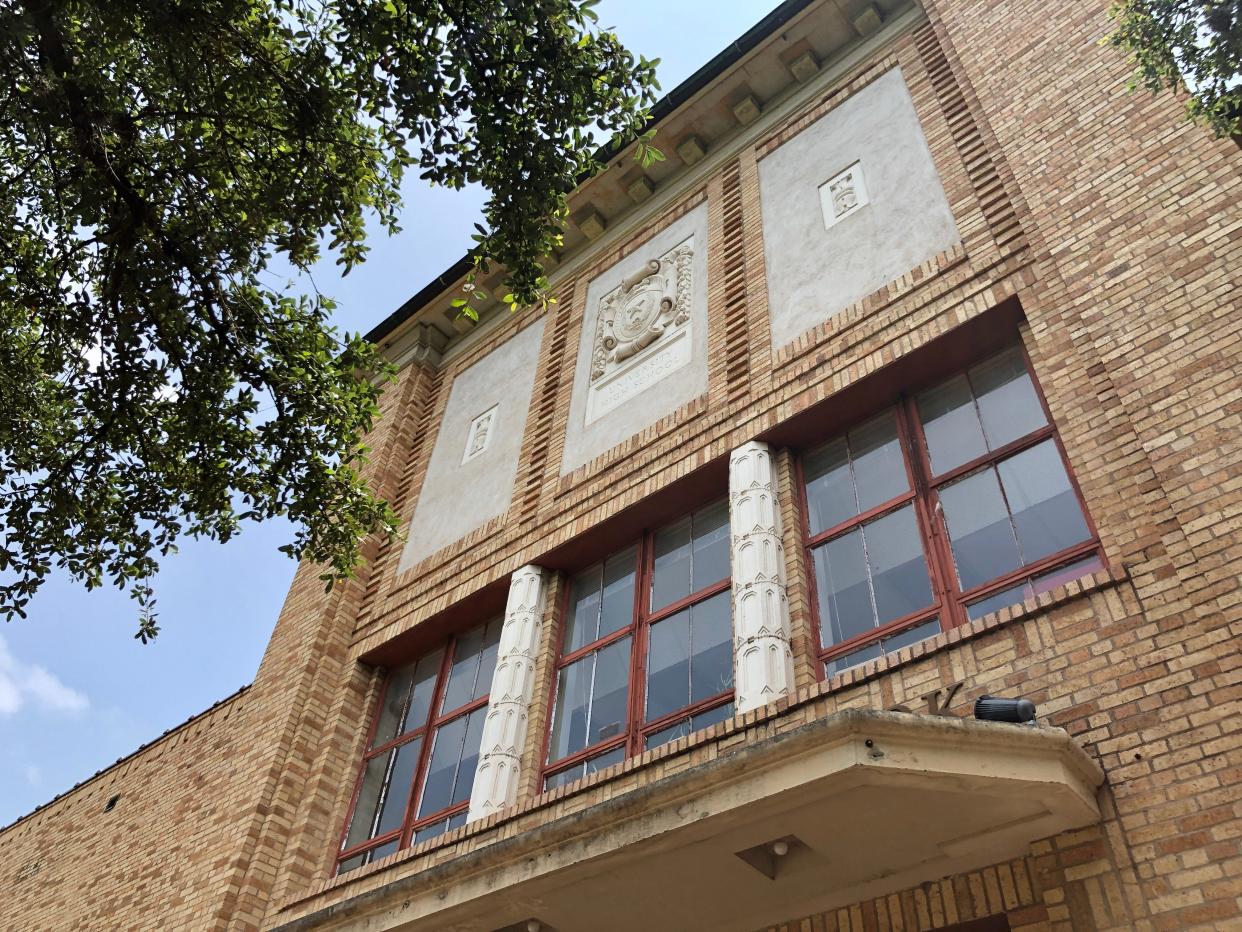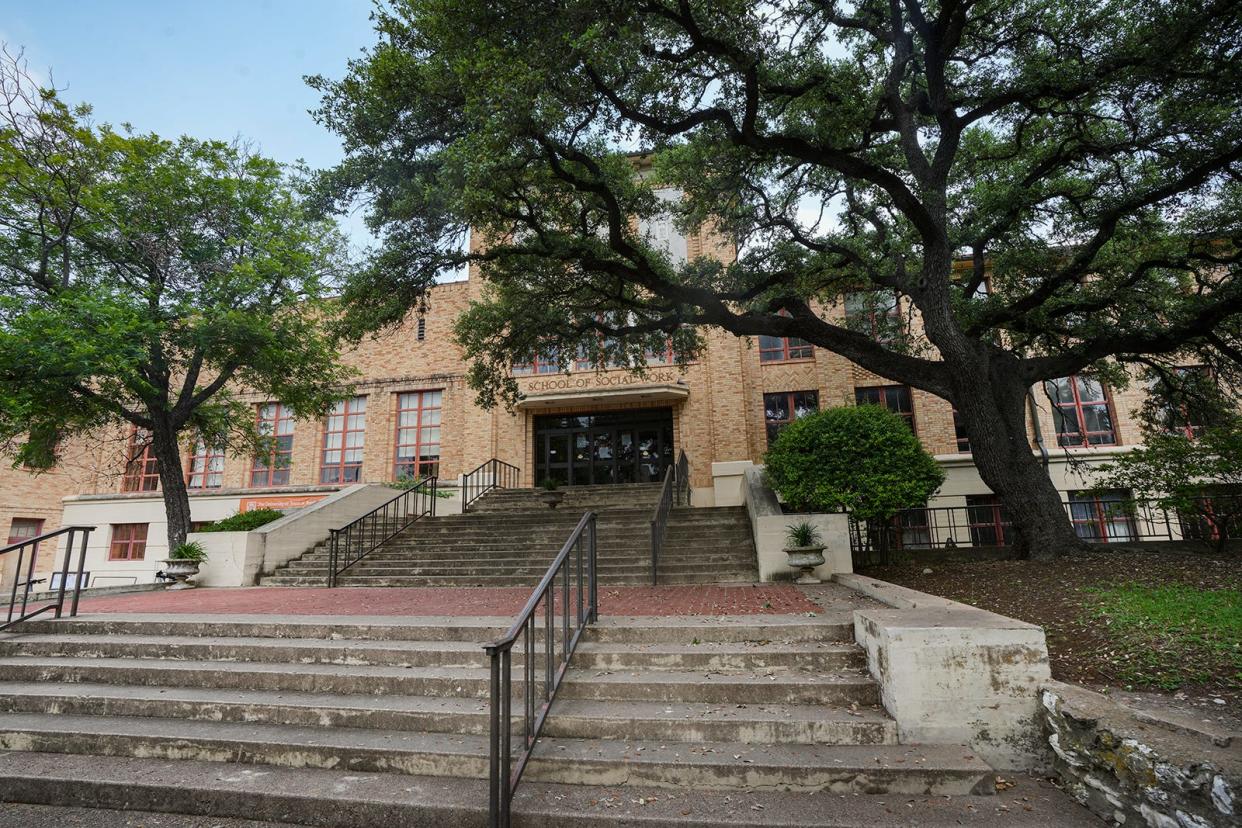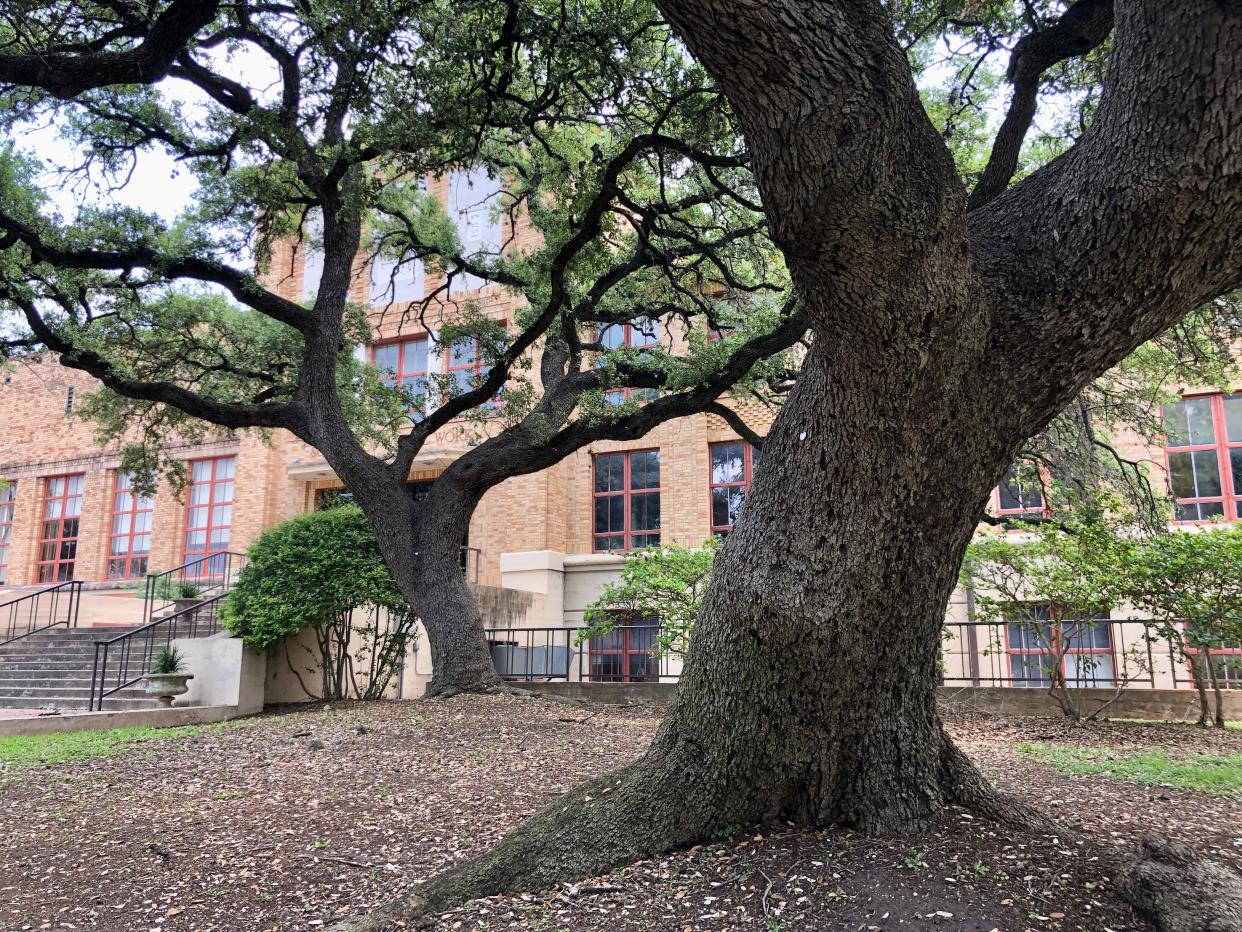Fate of historic schoolhouse — and future UT football facility — in state board's hands

Edwin Bautista knew it was a last-ditch effort, a long shot to save the 91-year-old historic building that the University of Texas wants to bulldoze so it can build a new football practice facility.
Then, last week, a preliminary win.
The state Antiquities Advisory Board recommended approval of Bautista’s request for protected landmark status for the old University Junior High building, a 1930s schoolhouse in the southeastern corner of the UT campus. The Spanish Revival building, notable for its role in desegregating Austin schools starting in the late 1950s, most recently housed the Steve Hicks School of Social Work (as well as the stunning stairwell mural by Raúl Valdez that I wrote about last year).
I should note: The advisory board’s 9-1 vote last Wednesday is just a recommendation. The matter now goes to the Texas Historical Commission, which is expected to consider the application in July.
The application process delays the building demolition that had been slated for June. And if the Texas Historical Commission decides to grant State Antiquities Landmark status to the old schoolhouse, UT wouldn’t be able to get a demolition permit without undergoing a rigorous state review — which would complicate, or possibly derail, its plans to build the new football practice facility on that coveted turf.
Bautista said that’s the point: A building with this level of community importance, already listed in the National Register of Historic Places, shouldn’t be easy to tear down.
“For the university to disregard (the University Junior High building’s history) is just so disappointing, because they are turning their back on our history, and that is something that I'm not willing to accept,” said Bautista, who earned his bachelor’s in urban studies and his master’s in community and regional planning at UT.

“UT is all about changing the world and being leaders in sustainability,” Bautista added, arguing the aging schoolhouse should be restored, not razed. “Well, you know, here’s a chance for you to live up to what you say you’re about.”
In response to the advisory board’s vote, UT spokesman Mike Rosen told me last week: “We respect the process. There are multiple steps, and we’ll let it play out.”
One option: UT could formally oppose the nomination, triggering an administrative hearing process, Antiquities Advisory Board Chair Jim Bruseth said at last week’s meeting.
“Things could get a lot more complex for the (Texas Historical) Commission down the road, and probably will, would be my guess,” Bruseth told his fellow board members.
Rosen has said that renovating the old University Junior High building would be “cost prohibitive.” He pointed to a March 2015 strategic master plan that put the price tag at $52 million.
But that same report presented such a renovation as a desirable investment: “We should want to build on this structure, both for its strength of character and history as well as its location,” Luis H. Zayas, then the dean of the School of Social Work, wrote in 2015.

That location is also enticing to the UT football program, though. Last year, UT announced a grand bargain of sorts: The School of Social Work would move to a larger, more modern building on campus, allowing UT to knock down the 1930s schoolhouse and build a football practice facility that would be just a short walk from the football program’s headquarters. (The current practice fields are a 10-minute walk or an even longer bus ride away.)
Rosen said UT will preserve the memory of the historic building through extensive walk-through photography and a documentary film.
“We are planning to salvage and store many of the valued artifacts, artwork and other mementos from the building, for example, the University High School emblem over the main entrance and ceiling light fixtures in the vestibule, theater and arcade,” Rosen added.
Still, you can build a new football practice site in any number of places.
You can’t replace a 91-year-old building with a cherished history. In a city changing as quickly as Austin, the touchstones of our past should not be discarded as an impediment. They connect us to a community story that is larger than our personal experience.
In recommending landmark protections last week, Antiquities Advisory Board member Norman Alston highlighted the fact the schoolhouse was designed by renowned architect George Dahl.
“As a Dahl aficionado, and an alumnus of the University of Texas, the need for this nomination is clear to me,” Alston said, “and I very much appreciate members of the community coming forward and making a stand for preserving some of our really most important historic buildings.”
Sadly, UT doesn’t share that view of this building. But something important is finally happening: a conversation beyond the UT campus about whether this piece of Austin history is worth preserving.
Grumet is the Statesman’s Metro columnist. Her column, ATX in Context, contains her opinions. Share yours via email at bgrumet@statesman.com or via Twitter at @bgrumet. Find her previous work at statesman.com/opinion/columns.
This article originally appeared on Austin American-Statesman: Next showdown for UT football: Texas Historical Commission | Grumet
